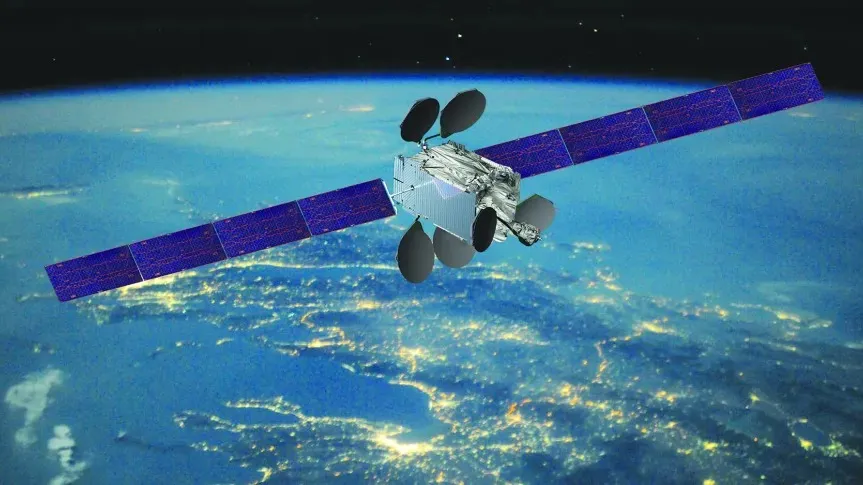Debris from an exploded telecommunications satellite is spreading across geosynchronous orbit, threatening other spacecraft in this precious region of space, an animation by a leading space situational awareness firm suggests.
The animation by Pennsylvania-based COMSPOC is a “notional” representation of the aftermath of the breakup of Intelsat 33e, which took place on Oct. 19.
COMSPOC chief scientist Dan Oltrogge told Space.com that the so-far-unexplained incident likely spawned more than 500 fragments, which are already threatening other satellites across a vast swath of the geostationary ring. The geostationary ring is a precious orbital region at an altitude of about 22,000 miles (36,000 kilometers) where satellites appear suspended above a fixed spot on Earth’s equator. Hundreds of satellites owned by commercial operators and governments occupy this unique orbit, as the stable vantage point it provides is perfect for broadcasting, weather monitoring and internet services.
The animation, posted by COMSPOC on X on Oct. 26, shows the fast-spreading cloud of space debris produced by the satellite breakup in pink color. Other satellites inhabiting this valuable orbital region are indicated in green.
“The animation clearly shows that the resulting debris fragments quickly interact not only with the originating spacecraft’s nearest neighbors, but within a short time much of the geosynchronous belt,” Oltrogge said.
Oltrogge warned that many of the fragments will not be trackable from Earth with available technology due to the long distance between the planet and the geostationary ring. Their paths will remain unknown, which means they could hit other satellites without warning. Trajectories of the larger, trackable debris pieces will eventually be mapped and forecasted, allowing satellite operators to avoid them. To catalog all of the fragments created by the Intelsat 33e breakup, however, “will take a while,” according to Oltrogge.
“Detectable collision risks will increase, requiring greater diligence and mitigation strategies on the part of other GEO operators,” Oltrogge said. “The non-trackable debris poses an increased collision threat to other spacecraft, and their operators must be diligent to look for signs of anomalous behavior in their spacecraft, which may be indicative of a debris strike that may require them to take countermeasures.”
Because the geostationary ring is so high above Earth, it does not benefit from the cleaning effects of the residual atmosphere, which creates drag that causes space debris at lower altitudes to eventually fall back to Earth. In geostationary orbit, the junk will remain essentially forever.
“[The debris fragments] will continue to exist in the geosynchronous ring, oscillating about the gravity well that exists at 75 degrees east,” Oltrogge added.
Most space sustainability researchers are currently focused on the heavily used low Earth orbit — the first 1,200 miles (2,000 km) of near-Earth space where most Earth-observing and megaconstellation satellites live. Oltrogge, however, pointed out that the Intelsat 33e incident highlights the vulnerability of the somewhat overlooked geostationary region.
“The fragile geosynchronous ring remains a very important orbital regime for satellite communications and even observation,” said Oltrogge. “Having accurate and comprehensive solutions for this new debris will be critically important going forward to best mitigate the risk.”
Intelsat 33e, launched in 2016, was built by Boeing and designed to remain in service for up to 20 years. At launch, the spacecraft weighed nearly 7.3 tons and, at 26 feet long (7.9 meters), was about as big as a small truck. The satellite previously suffered a propulsion system fault that resulted in higher fuel consumption and led to a reduction of the craft’s life expectancy. Boeing is still investigating the cause of the breakup.
Source: https://www.space.com/space-exploration/satellites/debris-from-satellite-breakup-threatens-other-spacecraft-animation-shows



